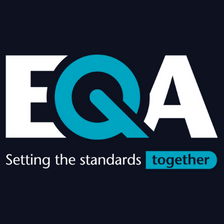Technical skills

Developing and maintaining the technical skills to be a competent internal auditor is essential at all career stages.
The guidance and resources on this page should be considered as a start point to your learning journey.
IPPF links | Guidance | Additional resources | Relevant position papers
Code of ethics | Consultancy | Data analytics | Fundamentals | Risk Management |Tools and techniques
Main IPPF links
Core principles1. Demonstrates integrity. |
Core principles (2019) |
| 1210 Proficiency | Implementation guidance |
| 1230 Continuing professional development | Implementation guidance |
|
Take time to think about your personal development plans and CPE requirements. A useful tool is Global IIA's 2020 Internal Audit Competency Framework© |
Guidance
Code of ethics
| Chartered IIA |
| Internal auditors accepting gifts and hospitality (2014) |
| IIA Global |
| Independence and objectivity (2011) | Internal audit competencies (2020) |
Consultancy
| Chartered IIA | ||
| Consultancy engagements (2017) |
Data analytics
| Chartered IIA | ||
| Data analytics - case studies (2017) | CATTs Computer assisted audit techniques (2018) | Analytics, mining and big data (2015) |
| Data analytics and internal audit (2021) | Data analytics - a not so exclusive club (2018) | IA in the digital age part 1 (Deloitte/IAF) (2019) |
| IA in the digital age part 2 (Deloitte/IAF) (2019) | IA in the digital age part 3 (Deloitte/IAF) (2019) | AI for IA artificial intelligence for internal auditors (2023) |
| IIA Global |
| Data Analytics Mandate: Part 1 (2017) | Data Analytics Mandate: Part 2 (2017) |
| Auditing big data (2017) | Data analysis technologies (2011) | Integrating a data-driven approach (2017) |
| IIA Global Data Analytics (2022) | Increase data analytics ROI (2023) |
Fundamentals of the audit process
| Chartered IIA |
| Conducting an interview (2014) | Control (2021) | Handling personal data (2020) |
| Insight and internal audit (2015) | Working papers (2014) | Working with stakeholders (2012) |
| Plan |
| Engagement planning (2017) | Assessing fraud risks (2017) | How to plan an audit engagement (2021) |
| How to approach unfamiliar work (2015) | Assessment of emerging risk (2020) | Risk identification (2021) |
| Sampling (2019) | Writing about risk (2016) | Auditing as part of a joint venture (2024) |
| Do |
| Risk based internal auditing (2013) | Doing a risk-based audit (2013) | Risk maturity assessment (2019) |
| Delivering internal audit findings (2015) | How to gather information (2016) | Reporting on the management of risk (2013) |
| Effective Report Writing (2022) |
| Review |
| File review (2019) | Supervising an audit engagement (2016) | Developing audit competencies (2020) |
| Following up recommendations (2013) | Improving audit efficiency (2019) | Why audits take longer (2015) |
| IIA Global |
| Audit reports (2021) | Demonstrating the core principles (2019) | Engagement planning: fraud (2017) |
| Engagement planning: scope (2017) | Formulating internal audit opinions (2009) | GAIT for business and IT risks (2008) |
| Integrated auditing (2013) | Remote auditing (2021) | Maturity models: assure and consult (2013) |
Risk Management - click here for guidance and information
Tools and techniques
| Chartered IIA | ||
| Agile internal audit - case studies (2020) | Agile – aim higher, react faster (2017) | AAP - role of internal audit (2021) |
| How to create an AAP (2021) | Lean vs agile - high level (2015) | Lean auditing (2015) |
| Mapping assurance (2020) | Process Mining for internal auditors (2023) | Professional Scepticism (2022) |
| Root cause analysis (2015) | Root cause analysis - blog (2019) | AI for IA artificial intelligence for internal auditors (2023) |
| IIA Global |
| Coordination and reliance - assurance mapping (2018) | Agile internal audit (2020) |
Additional resources
Don't forget the importance of interpersonal skillls.
Codes of practice | Financial services, private and third sector
Risk in Focus | An annual barometer of what CAEs and others see as the risk priorities for the year ahead
Harnessing the power of internal audit | Demonstrating the value of internal audit to an organisation
Board briefings | Coverage of broad topics designed for audit committees and internal auditors








